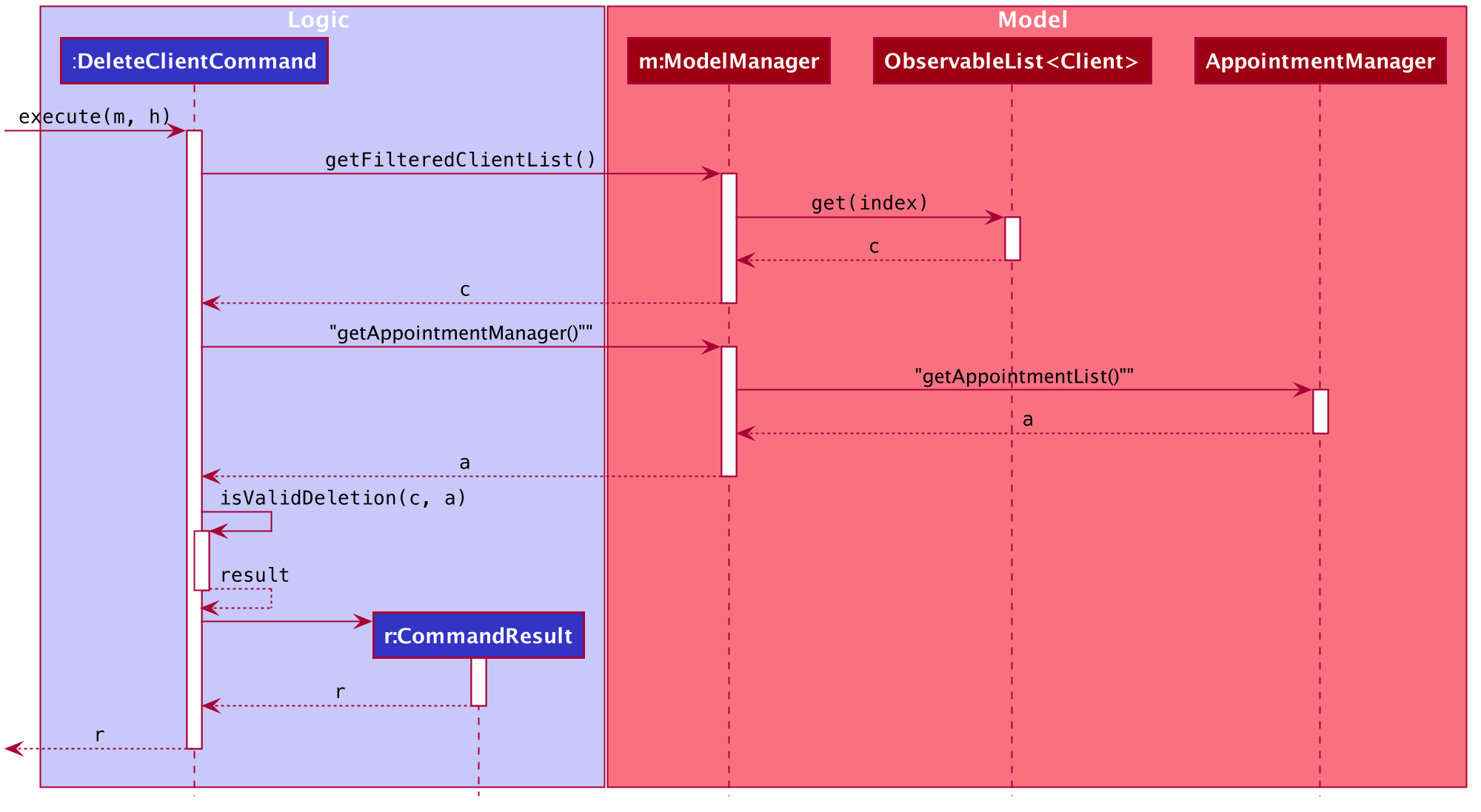Chang Rui Feng's Project Portfolio
Project: Homerce
Homerce is an all-in-one application that helps home-based beauty salon owners consolidate their business details - such as their schedule, appointments, clients, and services - into a single application. It also keeps track of the business’s revenue and expenses, and supports simple visualization of monthly finances. The application uses a Command Line Interface (CLI).
This portfolio aims to document the contributions that I have made to Homerce. In this project, our team - Homerce, will enhance a basic CLI Address Book 3 (AB3) and repurpose it to create our application: Homerce.
Given below is a summary of my contributions.
-
Code contributions: Reposense Link
- Refactoring:
- Refactored the Person class to Client class (Pull Request #67)
- Removing instances of AddressBook
- Updating the original delete, edit, find and clear commands
- Delete and clear commands for clients will take into account whether a client is scheduled in an upcoming appointment (Pull Request #311, Pull Request #296)
- Find command for clients will include prefixes allowing users to search using name or phone (Pull Request #136, Pull Request #299)
- Edit command for clients will update the client in an appointment as well (Pull Request #296)
- Enhancement of GUI
- Linked up the client, expense, appointment, revenue, service and schedule components to the GUI (Pull Request #137)
- Created the schedule view of appointments for Homerce (Pull Request #181)
- Enhanced the UI of the schedule view, side tab bar and background of Homerce to match with the UI mockup (Pull Request #214, Pull Request #230)
- Testing (Pull Request #207) Included JUnit Tests for the Client Manager, with over 90% line coverage on average, and including Integration Tests across logic, model and storage components for the Client Manager. Did manual testing of all UI components as well.
- Contributions to User Guide:
- Client Manager (Pull Request #185)
- Command Parameter Summary Table
- Commands Documentation, including command parameters, command format, command examples
- Command Summary
- Client Manager (Pull Request #185)
- Contributions to Developer Guide:
- Client Manager (Pull Request #328)
- Rationale
- Current implementation
- Activity Diagrams for
findclianddeleteclicommand - Sequence Diagram for
findclianddeleteclicommand - Design considerations for
findclianddeleteclicommands
- Schedule View (Pull Request#372)
- Rationale
- Current implementation
- Design considerations
- Client Manager (Pull Request #328)
- Contributions to team-based tasks
-
Contributions to documentation (Extracts) The contributions listed in this section will not be extensive, please refer to the respective documents for the full contributions.
- Developer Guide

Figure 1. Activity Diagram for deletecli command

Figure 2. Sequence Diagram for deletecli command
When the user enters the `deletecli` command to delete a client from the client list, the user input command undergoes the same command parsing as described in
[Section 3.3 Logic Component](#33-logic-component). During the execution of `DeleteClientCommand`, Homerce will access the client manager
and delete the client based on the index specified by the user.
The following steps will describe the execution of the `DeleteClientCommand` in detail, assuming that no errors are encountered.
1. When the `execute()` method of the `DeleteClientCommand` is called, the `Model`'s `getFilteredClientList()` method is called.
2. The `get()` method of the `ObservableList` is called returning the client at the `index` specifed by the user.
3. The list of appointments gets retrieved from by calling the `getAppointmentList` method of the `AppointmentManager`
4. The `isValidDeletion` method of the `DeleteClientCommand` is called to check if the client specified by index is scheduled in an upcoming appointment
* If the client is scheduled in an upcoming appointment, a `CommandException` is thrown
* If the client is not scheduled in an upominga appointment, the `DeleteClientCommand` returns a `CommandResult` with a success message
Extract 1. Description of Sequence Diagram for the `deletecli’ command
**Aspect: DeleteClientCommand implementation**
| | **Pros** | **Cons** |
| -------------|-------------| -----|
| **Option 1** <br> Deleting a client scheduled in an upcoming appointment would delete the corresponding appointment as well | More convenient for the user | Introduces more coupling between an appointment and a client and might create more bugs. Also might result in unwanted outcomes for the user. |
| **Option 2 (current choice)** <br> Allow users to delete a client only if the client is not scheduled in an upcoming appointment. | Easier to implement and reduces coupling. User will be clearer of the expected outcome as well. | If the user wants to delete a client scheduled in an upcoming appointment he/she must delete that appointment first making it a bit more troublesome for the user. |
Reason for choosing option 2:
* It is good coding practice to reduce the amount of coupling between classes
* It will be clearly communicate to the user what he/she can and cannot when deleting a client.
Extract 2. Design Consideration for deletecli command